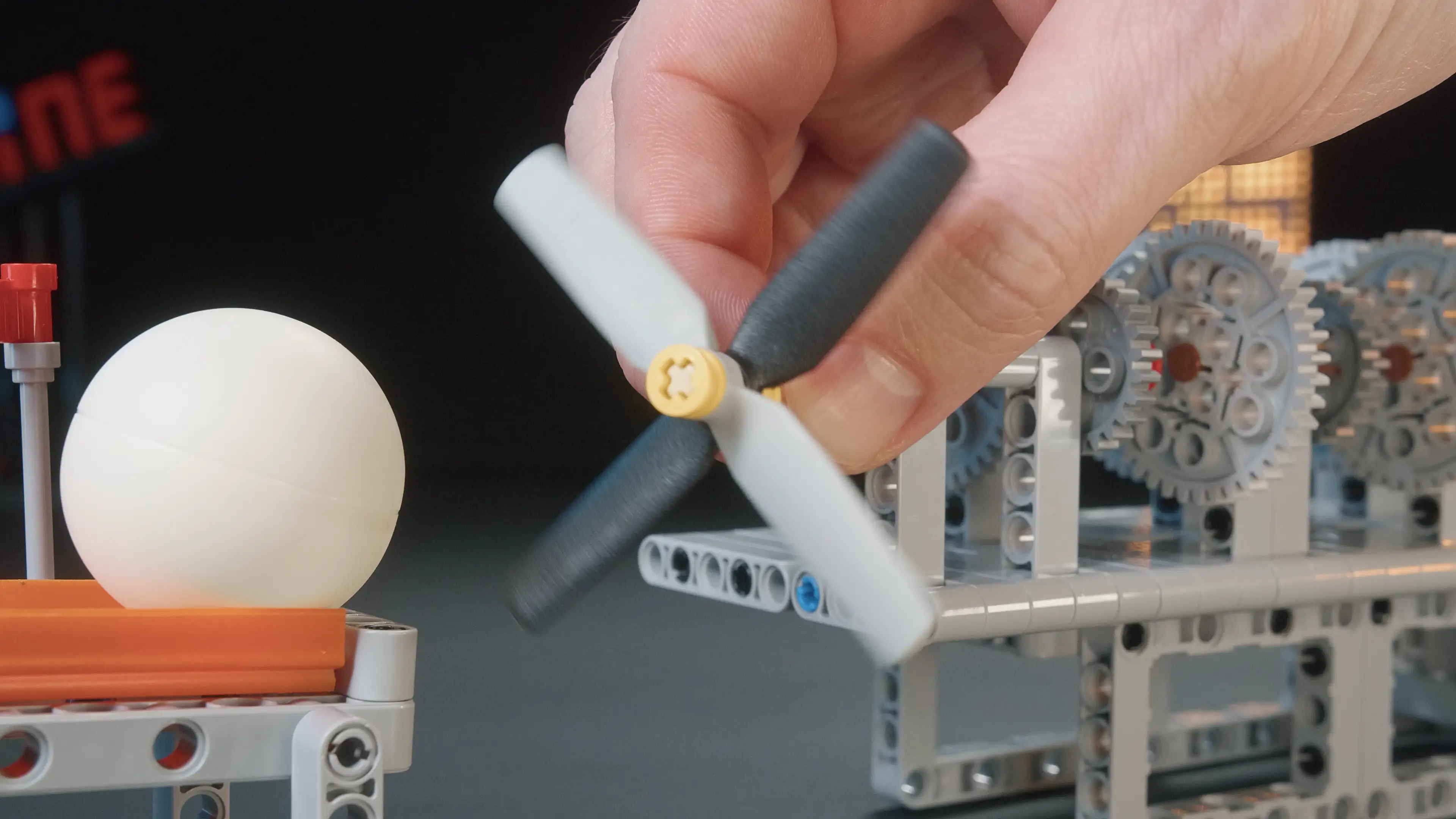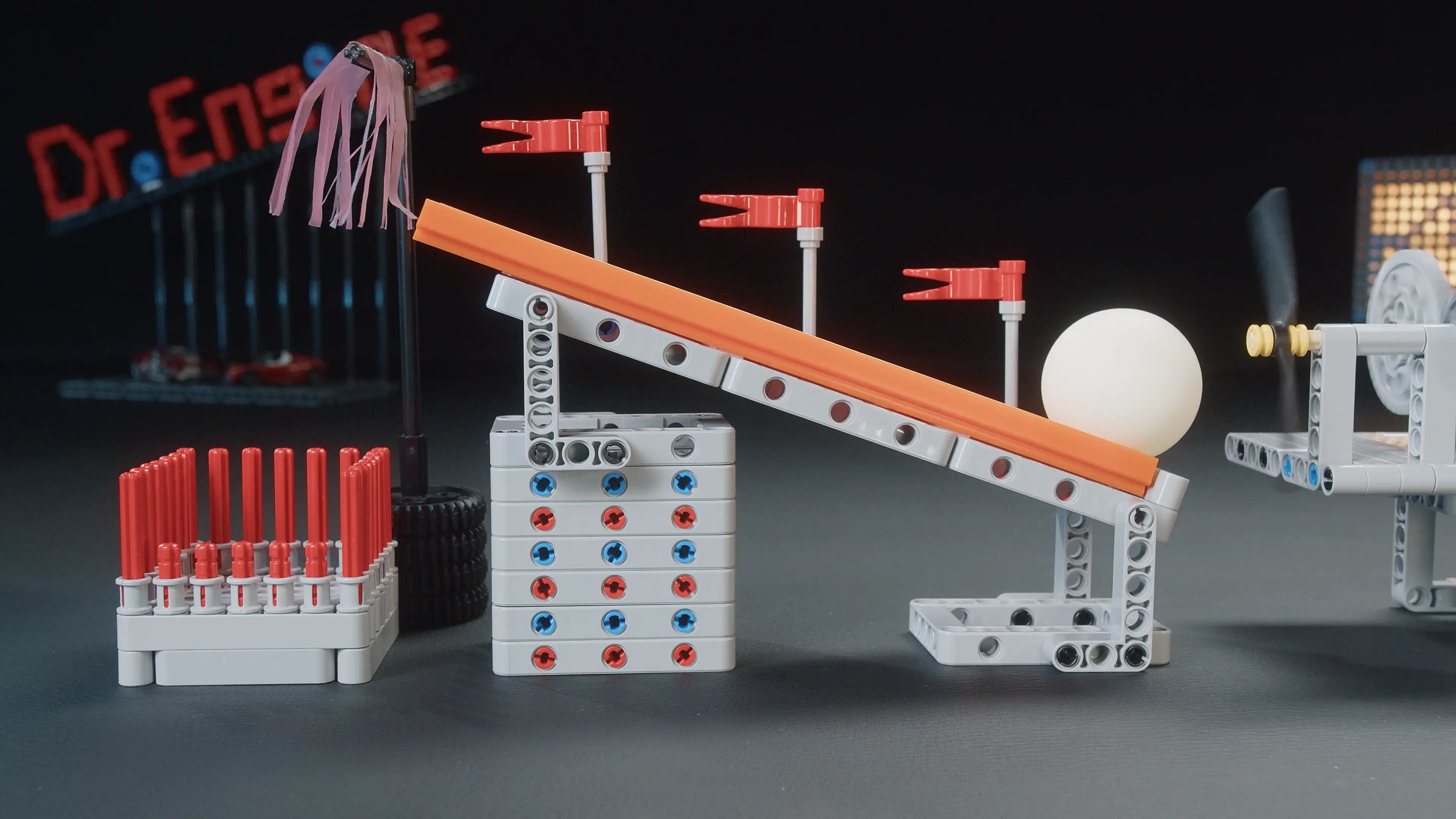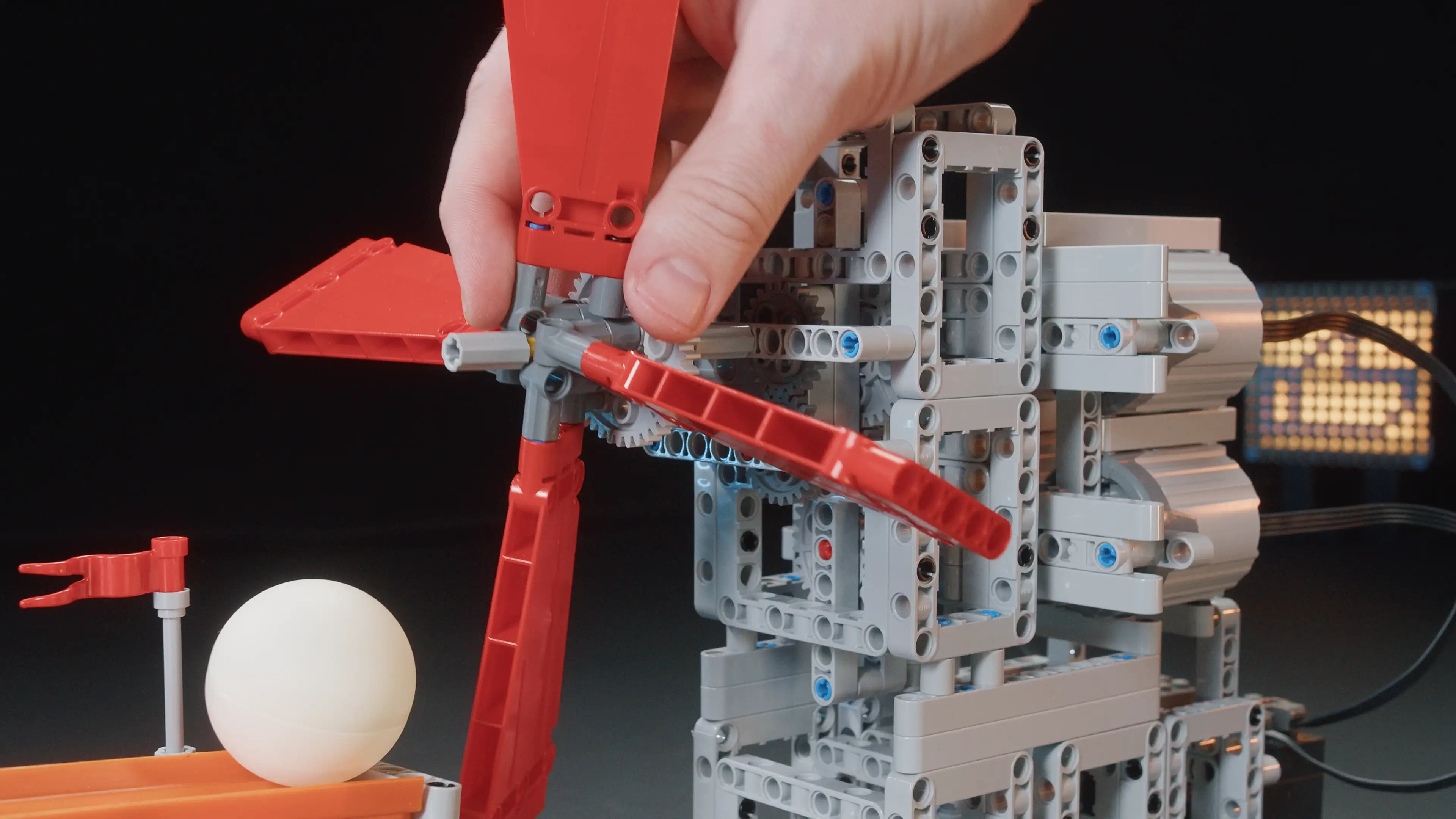Testing Various Lego Propellers: An Airflow Experiment
Introduction
Lego propellers offer an exciting way to explore the principles of aerodynamics and engineering. In this article, we delve into an experiment where we tested different Lego propellers by using air flow to push a ping pong ball. This fun and educational challenge provides insights into the performance and efficiency of various propeller designs.
The Basics of Lego Propellers
What Are Lego Propellers?
 Lego propellers are specialized components designed to replicate the function of real-life propellers. They come in a variety of shapes and sizes, each suited for different types of builds. These propellers are commonly used in models such as planes, helicopters, and fans.
Lego propellers are specialized components designed to replicate the function of real-life propellers. They come in a variety of shapes and sizes, each suited for different types of builds. These propellers are commonly used in models such as planes, helicopters, and fans.
Types of Lego Propellers
Lego offers a range of propellers, each with unique characteristics:
- Small Propellers: Best for lightweight and compact builds.
- Medium Propellers: Versatile and widely used for a balance of power and size.
- Large Propellers: Ideal for larger, more powerful builds requiring significant thrust.
- Specialty Propellers: Designed for specific applications and unique performance needs.
The Experiment Setup
Materials and Tools
For our tests, we used the following materials:
- Various Lego propellers (small, medium, large, and specialty)
- Lego Technic bricks and beams for constructing the test rigs
- Lego motors and battery packs
- A ping pong ball
- Measuring equipment (ruler and stopwatch)
Test Environment
We conducted our tests in a controlled indoor environment to minimize external factors like wind and uneven surfaces. Each propeller was tested under identical conditions to ensure fair comparisons.
The Propeller Challenge
Objective
The objective of the experiment was to determine which Lego propeller could push a ping pong ball the farthest using air flow generated by the propeller.
Setup
 We built a simple frame using Lego Technic beams and attached each propeller to a motor. The motor and propeller assembly was positioned to blow air directly at the ping pong ball placed at a fixed starting point. We measured the distance the ball traveled for each propeller type.
We built a simple frame using Lego Technic beams and attached each propeller to a motor. The motor and propeller assembly was positioned to blow air directly at the ping pong ball placed at a fixed starting point. We measured the distance the ball traveled for each propeller type.
Procedure
- Construction: Build a stable frame to hold the motor and propeller assembly.
- Positioning: Place the ping pong ball at a fixed starting line.
- Activation: Turn on the motor and allow the propeller to push the ball using air flow.
- Measurement: Record the distance the ping pong ball traveled.
- Repetition: Repeat the test multiple times for each propeller to ensure accuracy and consistency.
Results
Small Propeller
- Performance: The small propeller generated a modest airflow, pushing the ping pong ball a short distance.
- Average Distance: 1.5 meters
- Observations: Suitable for lightweight builds, but limited in pushing power for larger tasks.
Medium Propeller
- Performance: The medium propeller provided a good balance of airflow and stability.
- Average Distance: 3 meters
- Observations: Versatile and effective, ideal for most medium-sized projects.
Large Propeller
- Performance: The large propeller created a strong and powerful airflow, pushing the ping pong ball significantly farther.
- Average Distance: 5 meters
- Observations: Requires a robust motor and stable setup, but delivers excellent performance.
Specialty Propeller
- Performance: The performance varied depending on the specific design of the specialty propeller.
- Average Distance: 2.5 meters (average across different specialty designs)
- Observations: Some designs offered unique airflow patterns that were effective for specific purposes.
Analysis and Insights
Efficiency and Power
 Our experiment demonstrated that the size and design of the propeller significantly affect its ability to generate airflow and push the ping pong ball. Larger propellers generally provided more power but required careful handling to ensure stability. Medium propellers offered a balanced performance, making them suitable for a wide range of applications.
Our experiment demonstrated that the size and design of the propeller significantly affect its ability to generate airflow and push the ping pong ball. Larger propellers generally provided more power but required careful handling to ensure stability. Medium propellers offered a balanced performance, making them suitable for a wide range of applications.
Practical Applications
Understanding the characteristics of different Lego propellers can help builders choose the right component for their specific needs. Whether creating a small fan or a powerful air-driven vehicle, selecting the appropriate propeller is crucial for achieving the desired results.
Conclusion
 Testing various Lego propellers by using air flow to push a ping pong ball was an engaging and educational experiment. It highlighted the importance of propeller design in generating airflow and demonstrated the potential of Lego components in dynamic, functional builds.
Testing various Lego propellers by using air flow to push a ping pong ball was an engaging and educational experiment. It highlighted the importance of propeller design in generating airflow and demonstrated the potential of Lego components in dynamic, functional builds.
By experimenting with different propellers, Lego enthusiasts can enhance their understanding of aerodynamics and engineering, unlocking new possibilities for creative and functional projects. Happy building!
